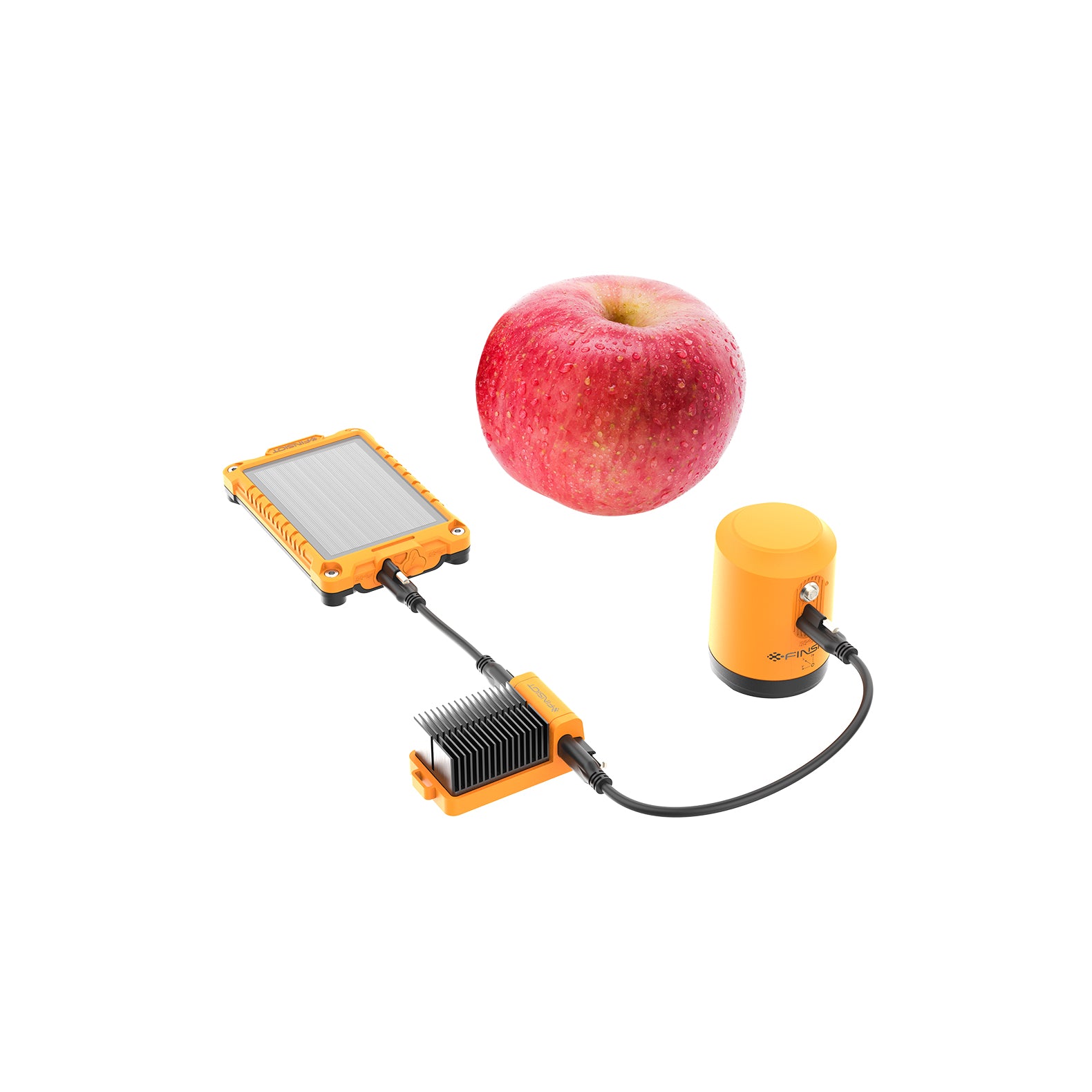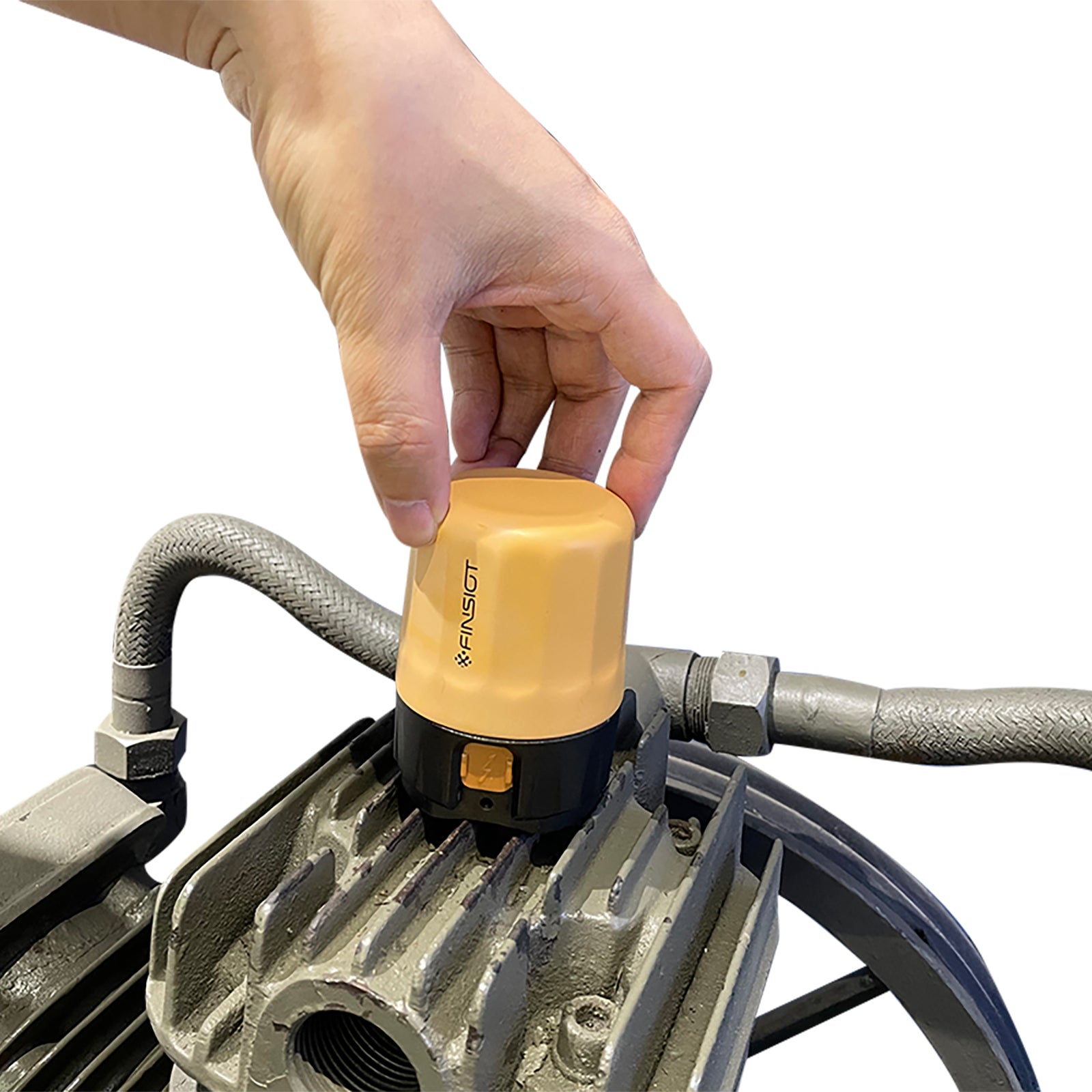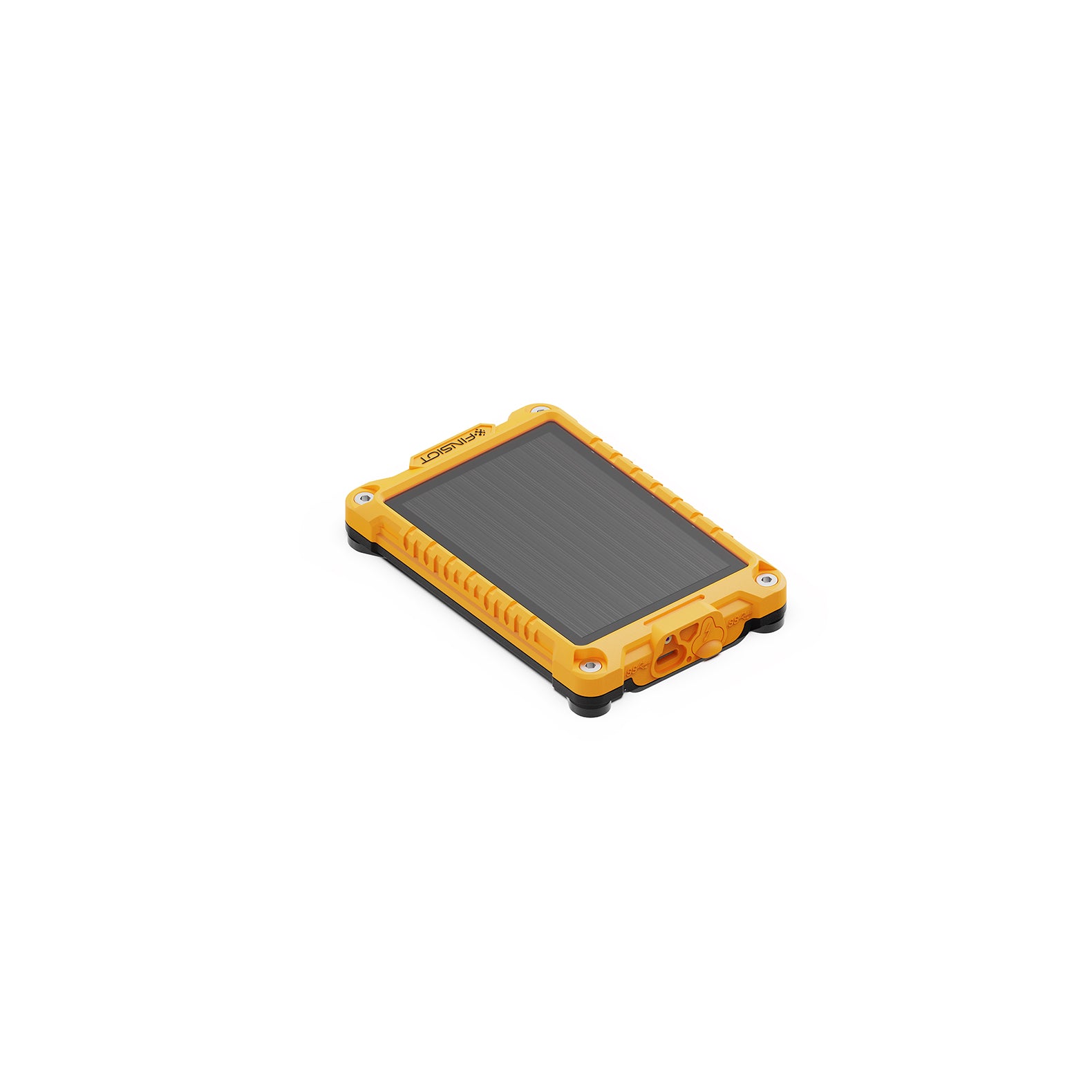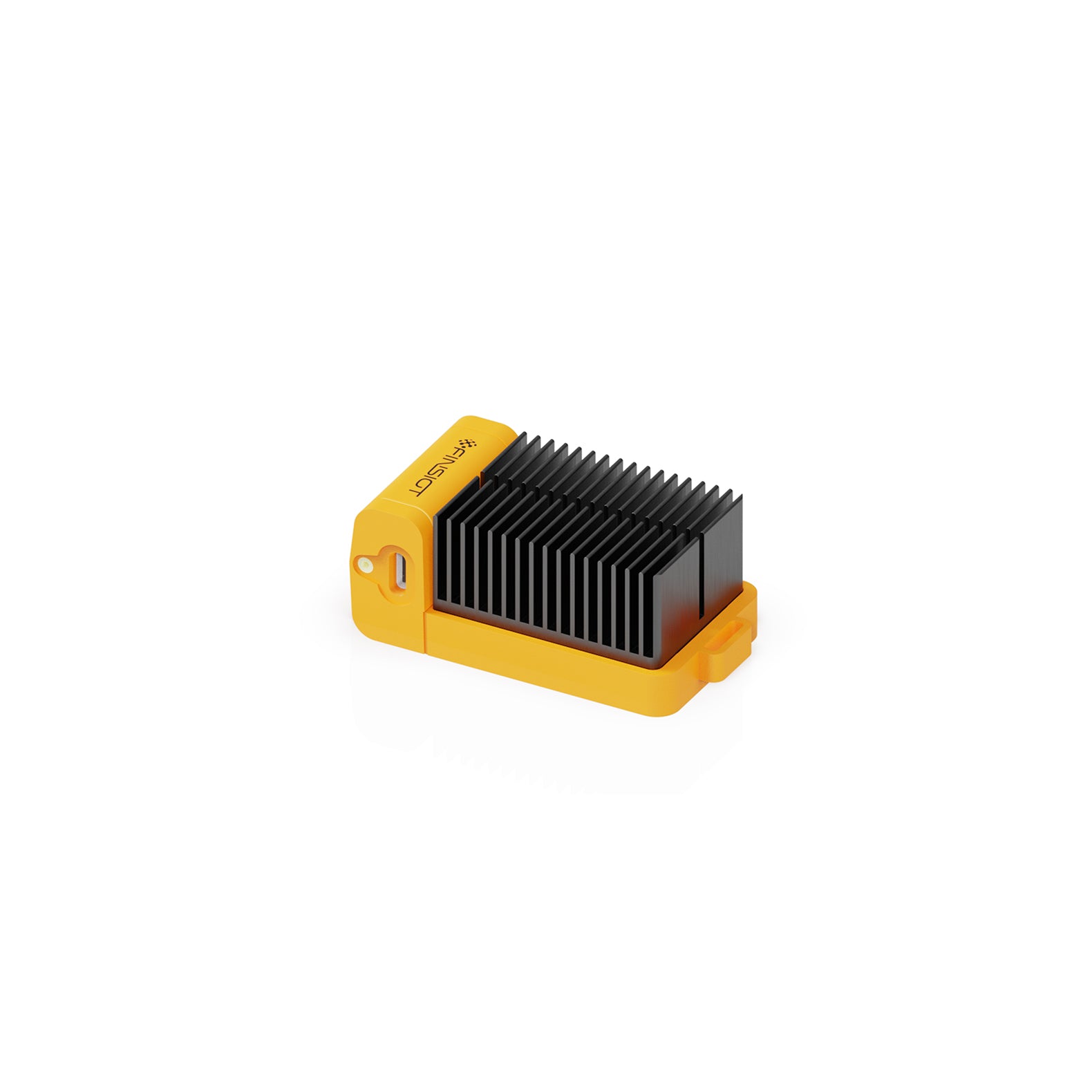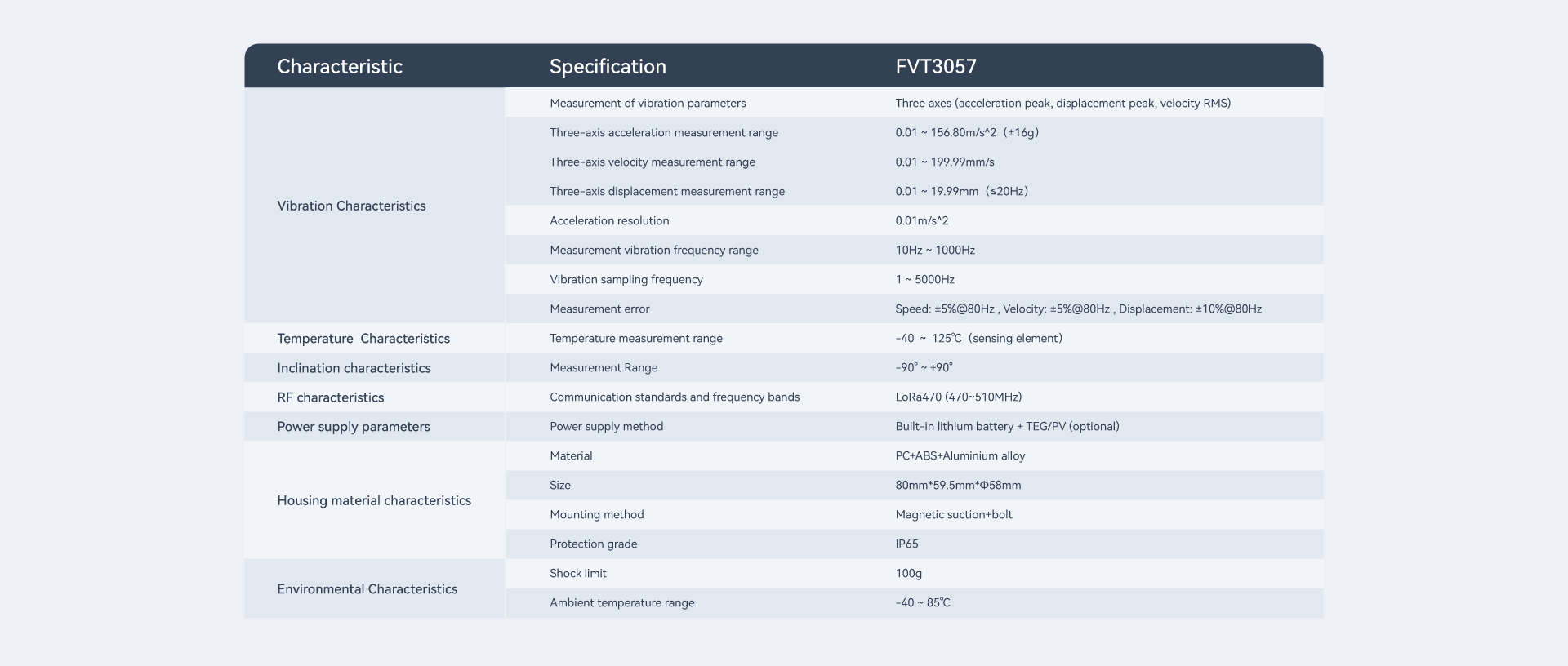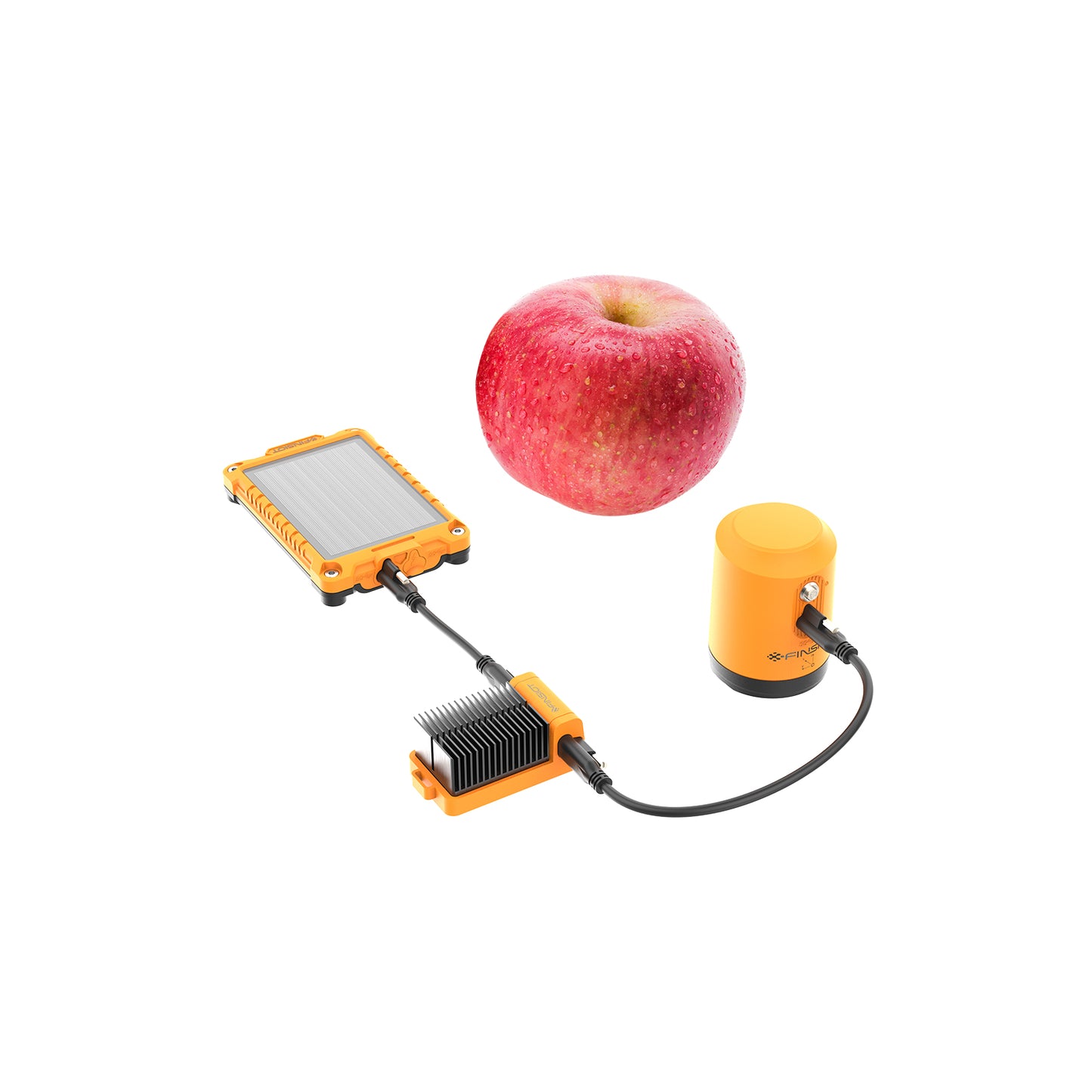
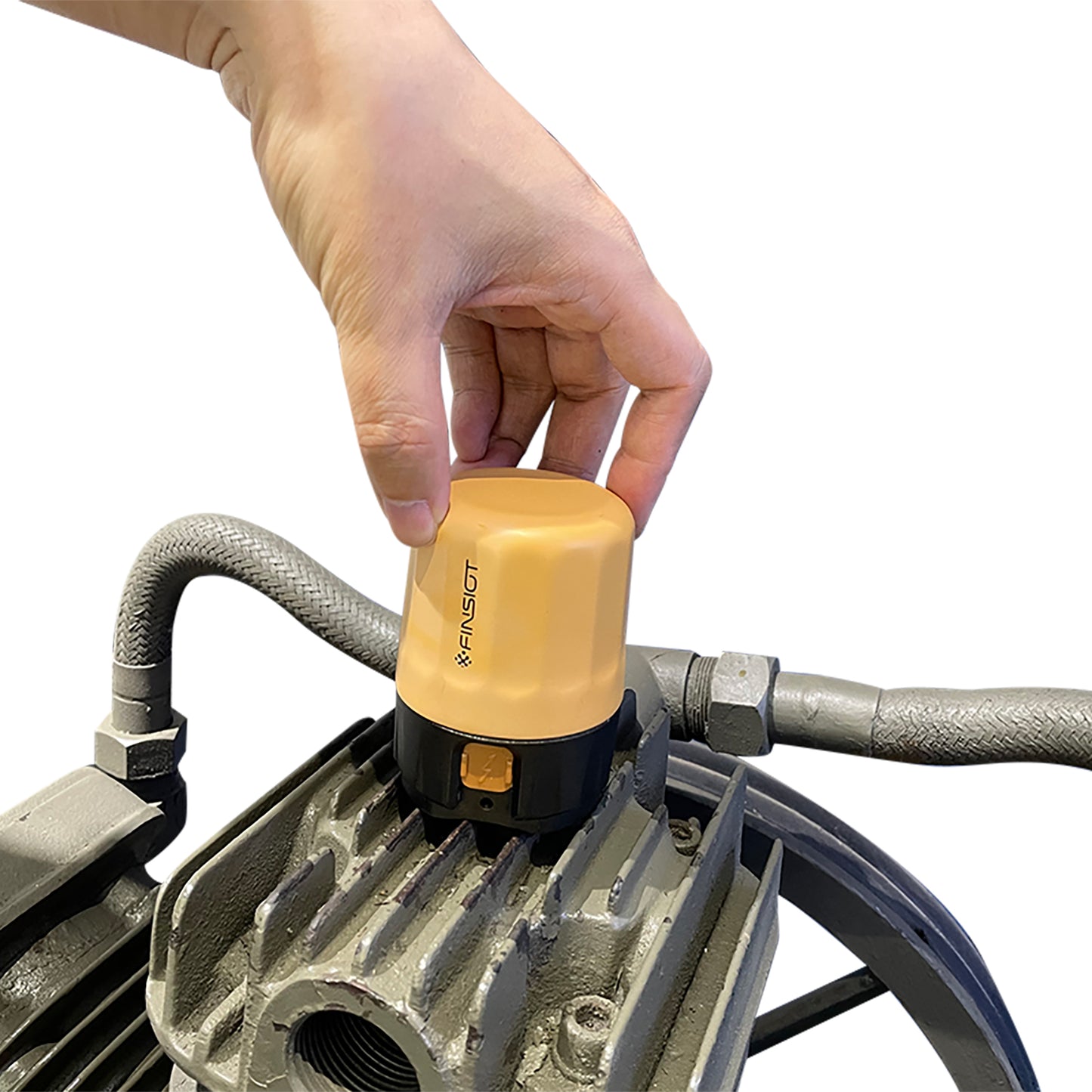
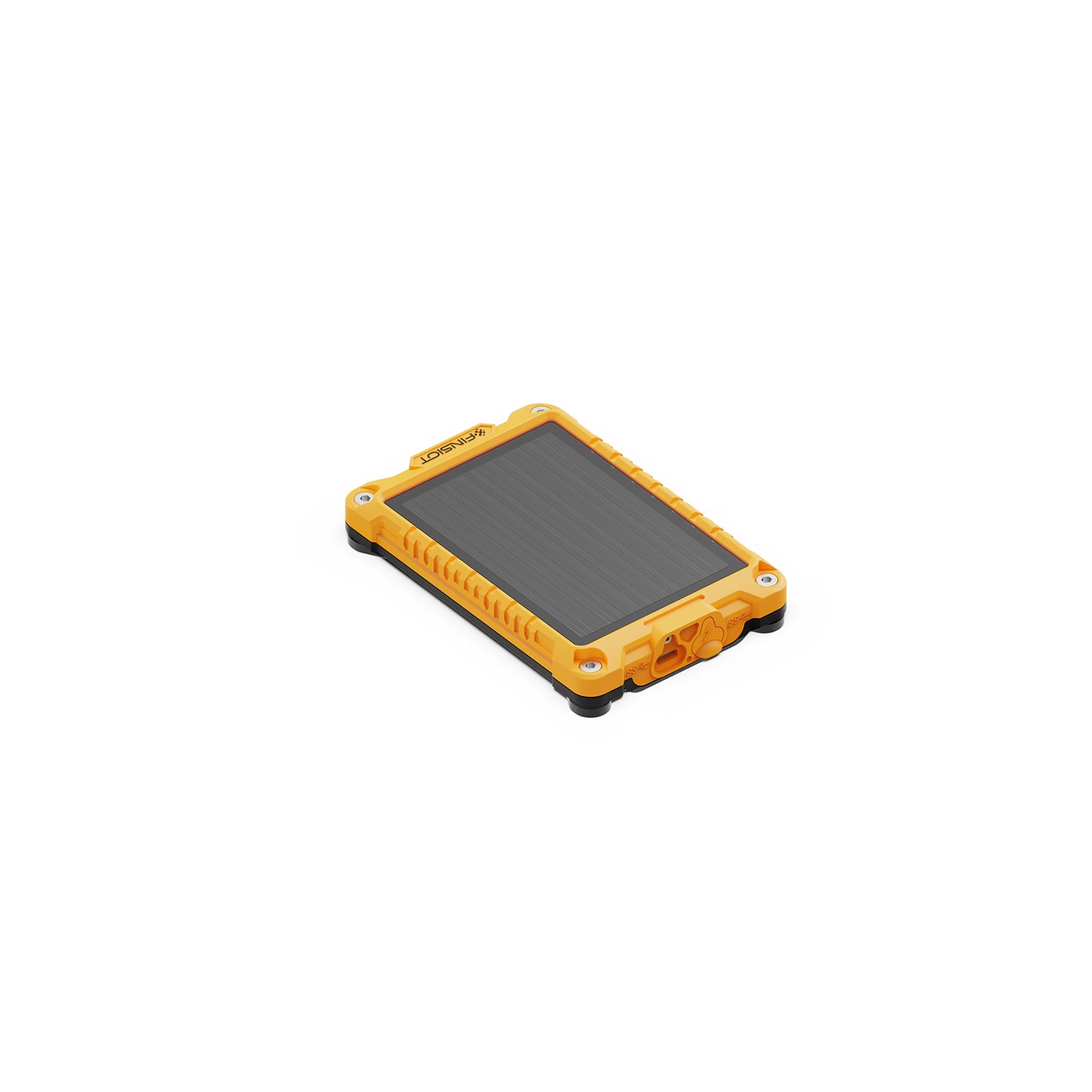
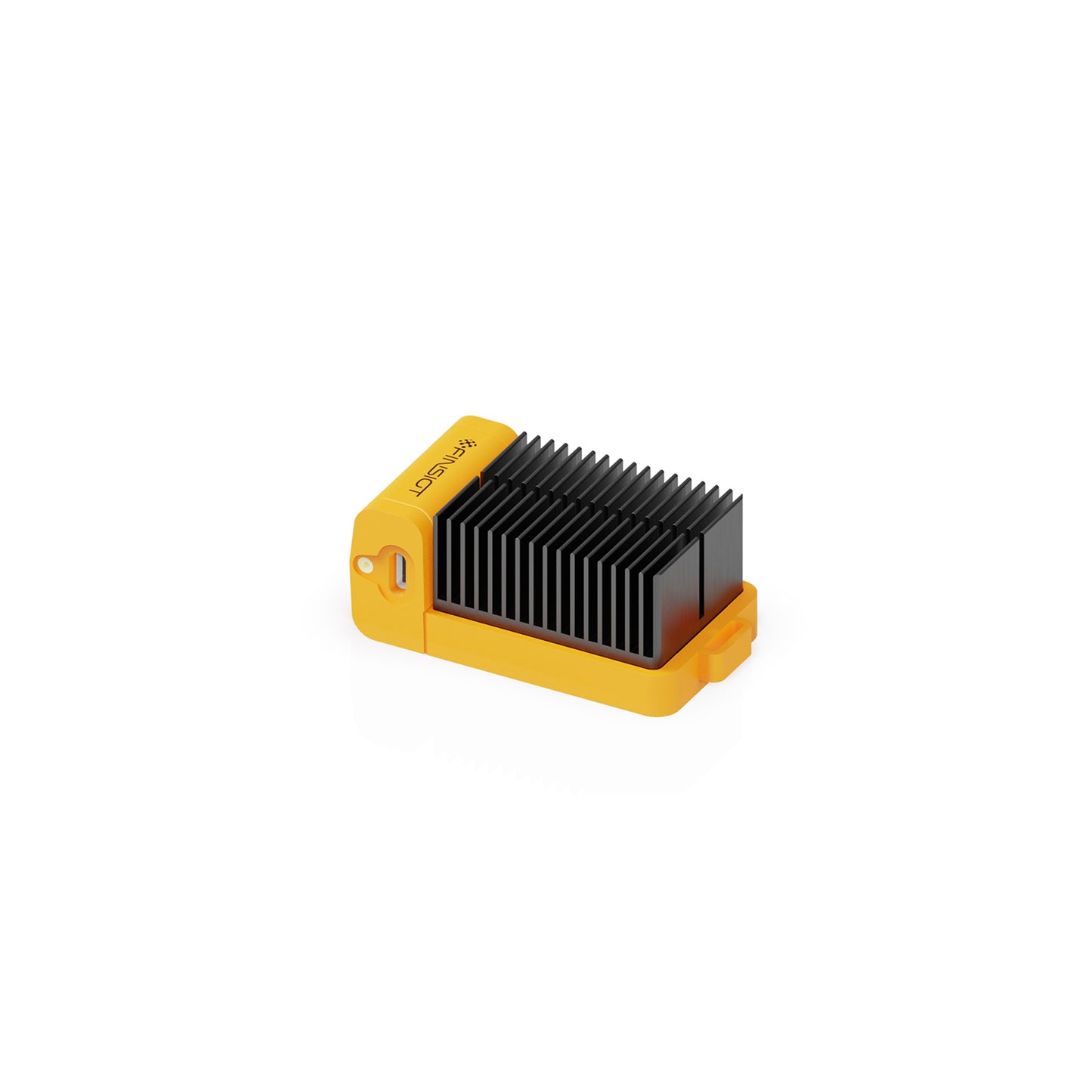
Product Function
-

Machine Vibration Monitoring
The product is equipped with a high-precision three-axis acceleration sensor, capable of monitoring ±16g, suitable for monitoring the status of medium and low-pressure motors and other rotating or vibrating devices.
-

Feature Monitoring
The product can measure frequency responses in the range of 0 to 1500 Hz, while achieving waveform periodic collection every 5 minutes, enabling faster detection of equipment abnormalities.
-

FFT Spectrum Analysis Algorithm
The product incorporates FFT brand analysis algorithms, capable of identifying frequency components present in the system and frequency characteristics associated with specific types of faults.
-

Contact-Type Device Shell Temperature Measurement
The device innovatively incorporates temperature measurement functionality, capable of collecting the device shell temperature in the range of -10 to 70°C, providing additional dimensions for monitoring device health.
-

Self-powerd wireless
Innovatively adopts environmental energy harvesting technology, enabling multiple power sources such as ambient light energy, temperature difference energy, and battery functions.
-

LoRa Wireless Communication
The product utilizes LoRa modulation for wireless communication, and by connecting to RevoMinds LoRa DTU or RevoMinds Nano gateway, it can connect to as many as 100 of these sensor devices.
Industry Value
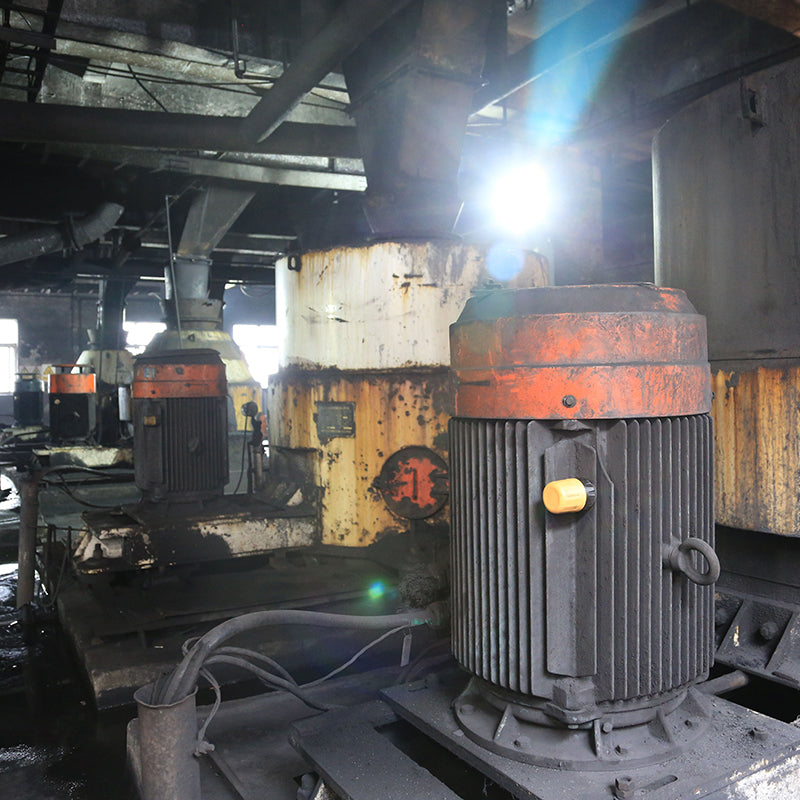
Manage Equipment Status, Eliminate System Risks
• From the workshop to the CEO's office, gain comprehensive insights into the operational status of factory equipment.
• Focus on critical equipment status to ensure stable production operations.
• Healthy equipment operation contributes to avoiding safety production risks.
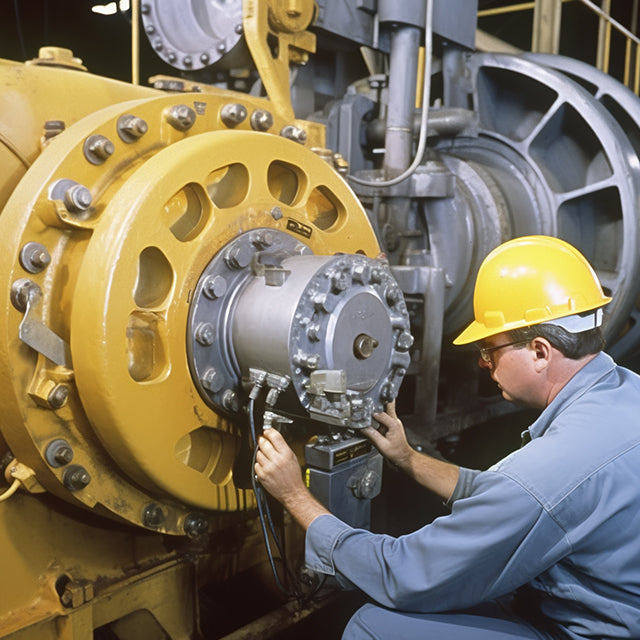
Eliminate Unplanned Downtime
• Discover and Predict: Identify early signs of failures and predict the development trends of faults.
• Respond and Plan: Based on maintenance recommendations, schedule equipment maintenance to eliminate unplanned downtime.
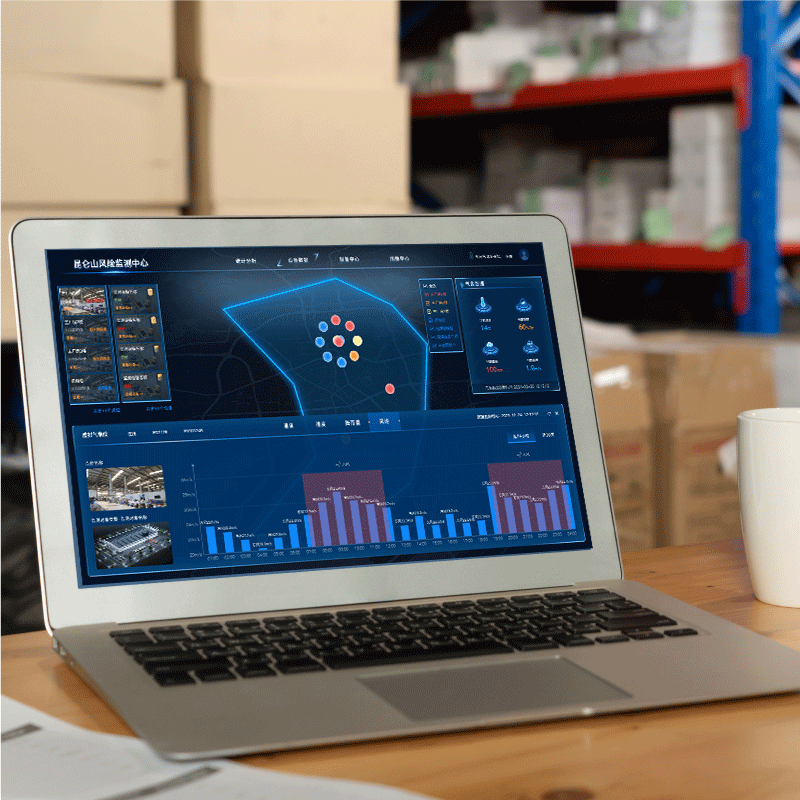
trends of faults
- Identify early faults, perform timely maintenance, and extend the equipment lifespan.
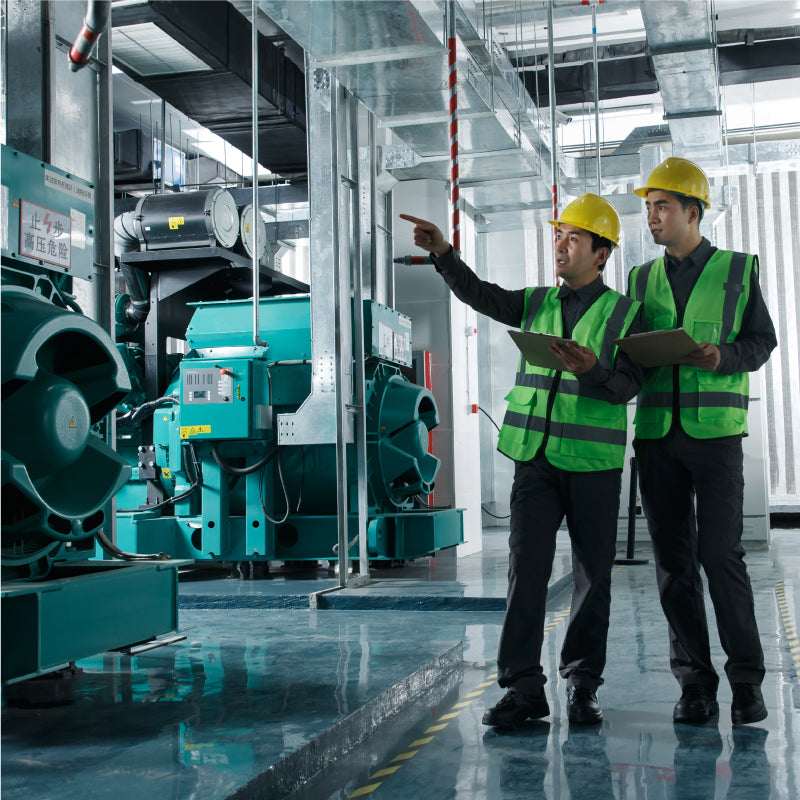
Reduce Human Errors, Improve Personnel Efficiency
• Appropriately reduce inspection frequency and accurately obtain equipment status.
• Schedule maintenance plans based on equipment status, ensuring maintenance team work is full and orderly, significantly improving work efficiency.
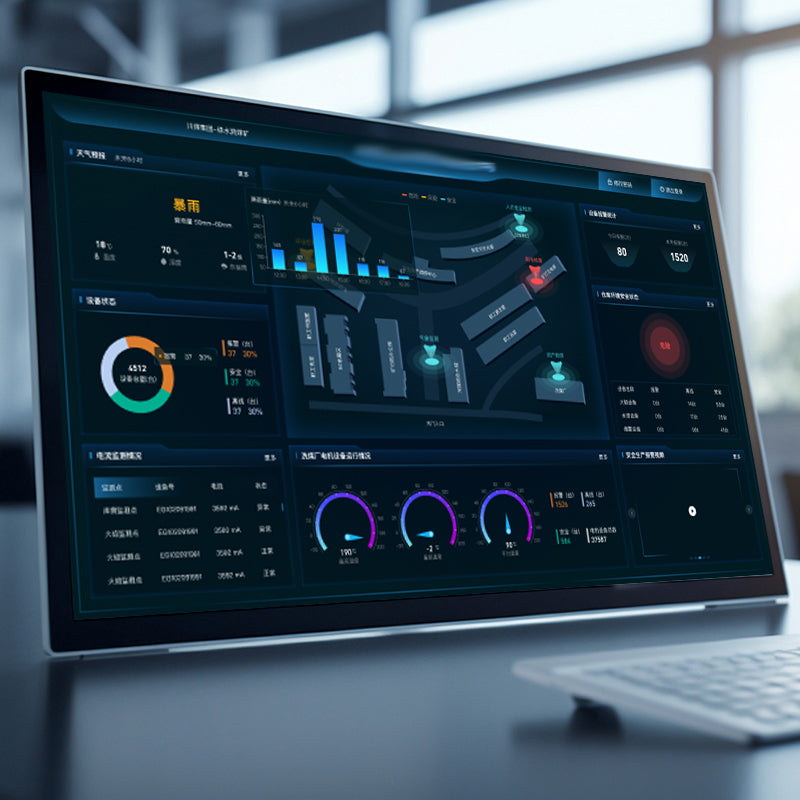
Lower Operational Costs
• Convert major faults into minor ones, significantly reducing labor hours and maintenance costs.

Empower Smart Factories
• Collaborate with other smart factory platforms, provide equipment status information and fault analysis services, and create more derived functionalities.
Scene Application
Share information about your brand with your customers. Describe a product, make announcements, or welcome customers to your store.
Specifications
Common Questions
What is vibration monitoring?
Vibration is not inherently bad — every rotating machine has a unique vibration signature. When a machine’s vibration measurements change, though, it can be an indication of potential faults. Vibration monitoring makes it possible to identify changes in vibration when they occur so that maintenance teams can diagnose and fix problems before they escalate. Taking action before failure occurs keeps equipment in peak operating condition longer.A vibration monitoring program uses sensors and tools to measure changes in the amplitude, frequency, and intensity of forces that damage rotating equipment. Armed with this data, maintenance teams can conduct vibration analysis to discover imbalance, looseness, misalignment, or bearing wear in equipment prior to failure. Handheld vibration measurement tools and wired or wireless vibration sensors are a few options for capturing vibration data.
Why is Vibration Monitoring Important?
Vibration sensors are a key piece of predictive maintenance programs. Maintenance and reliability teams can minimize costly production interruptions and downtime when they have accurate, real-time vibration data.Typically, the most critical assets need the most monitoring — that means more data captured more often. Some assets may be monitored effectively with overall snapshots of vibration data, or with measurements taken regularly but not continuously. An asset’s setting should be taken into consideration, too — a wired vibration sensor may not work in every location.
How to measure vibration
Vibration testing personnel measure vibration with handheld analyzers, wireless vibration sensors, or through on-line vibration monitoring systems. Most vibration tools capture the time waveform of the vibration over time. This can then be translated into frequency domain readings through FFT conversion, which gives further insight into what components are responsible for which signals, and which faults are present.. Wireless sensors give you the power to monitor asset condition 24/7, sending measurements to your systems at specified intervals. These are ideal for setting up alarms when vibration readings exceed normal levels. On-line vibration monitoring systems are sophisticated wired set ups that continuously collect data. Vibration experts implement on-line monitoring to work on critical machines that need in-depth vibration analysis.
What is a vibration sensor?
A vibration sensor simply measures the vibration of the machine it is mounted on. Vibration sensors are available for a wide range of applications, priorities, and budgets. They reduce the need for technicians to go asset to asset taking measurements with handheld tools. Thanks to real-time asset condition data, teams can focus on the assets that need attention.Wired vibration sensors can take and transmit vibration measurements continuously, while wireless vibration sensors take and transmit measurements at regular intervals. Depending on the specific sensor and need, this interval can be as frequently as every minute.Each type of vibration sensor has benefits and drawbacks. Wired vibration sensors can cost more, and the necessary cabling can add complexity and limitations, but they can collect extensive and detailed data.Wireless vibration sensors can have their data transfer speeds impacted by a variety of factors, such as connectivity and location. But they are much simpler and less expensive to install than wired sensors, making them highly scalable.A well-rounded vibration monitoring system can include both wired and wireless vibration sensors to balance their strengths and weaknesses.
How do vibration sensors help prevent failures?
Take bearings, for example. In general, vibration monitoring can detect slight bearing wear 12 to 18 months before bearings actually need to be replaced. Once a vibration sensor has identified changes in vibration patterns, teams can track the progression and choose the best time to replace the bearing.

